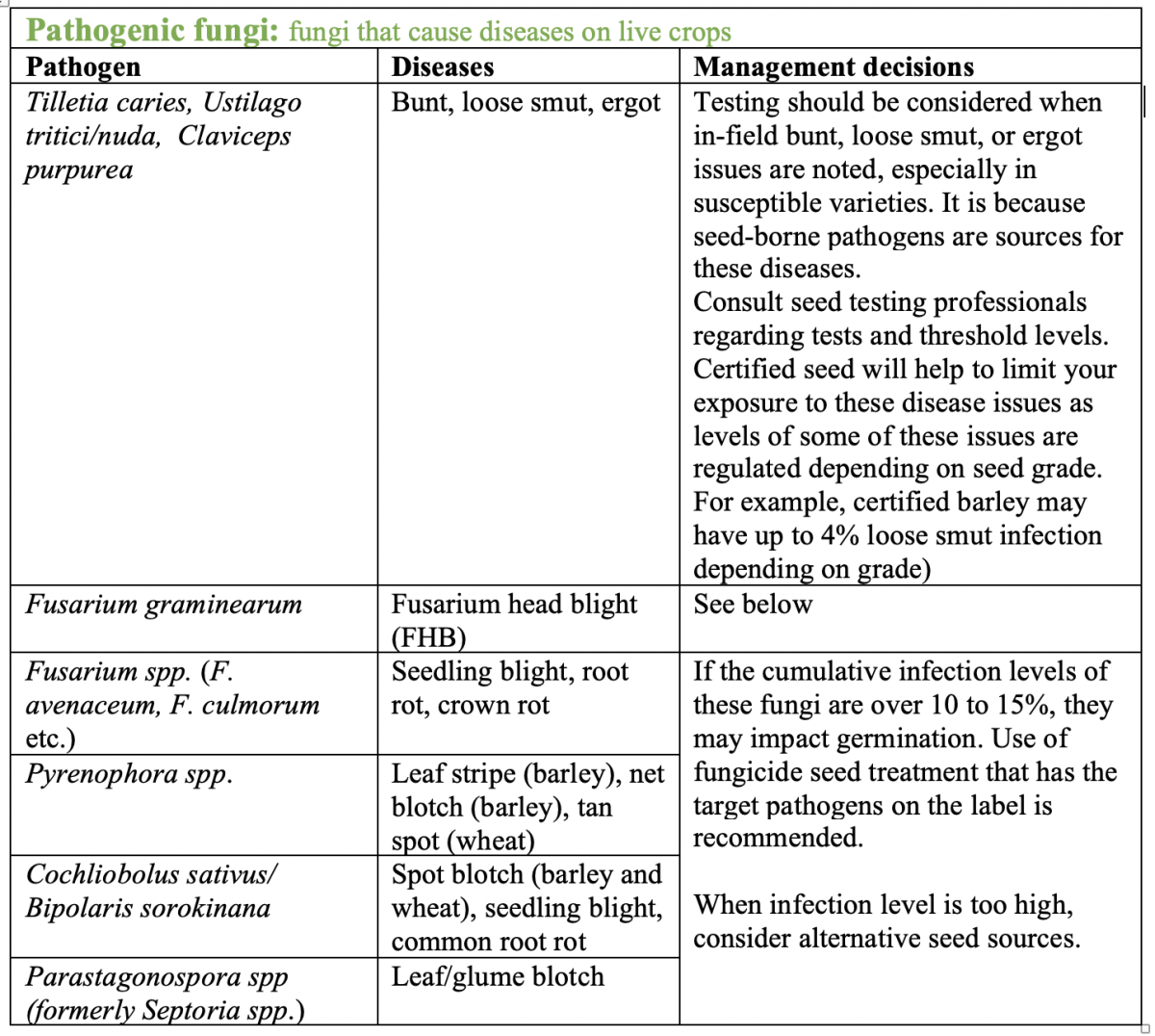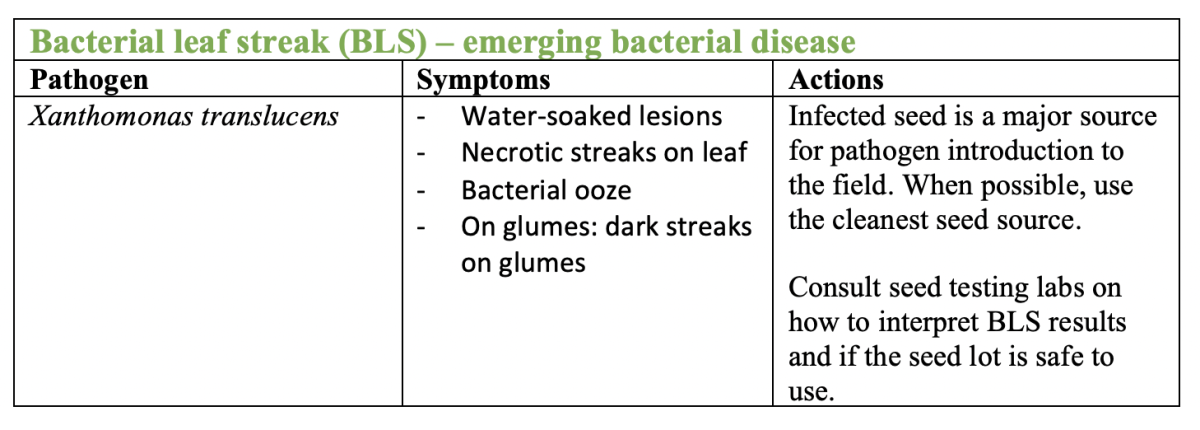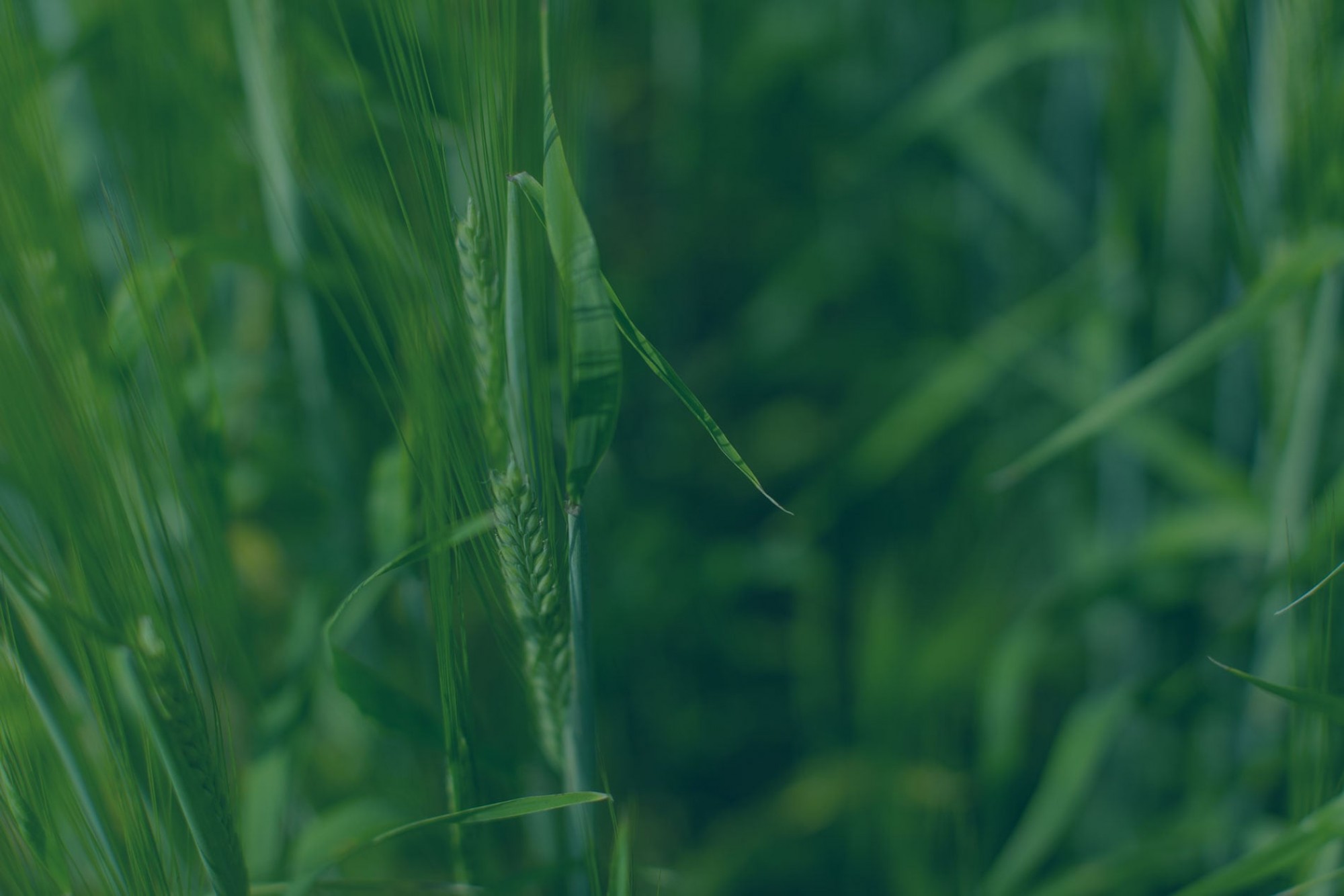How to interpret your seed test results - a step-by-step guide
Seed tests are a great way for producers to find out what they are dealing with when it comes to seed quality and health. Whether you are a seed grower or saving your own seed, testing seed after harvest and again in the spring can provide seed management insights. A fall seed quality test provides an indication of the grain’s potential as seed. Spring testing gives insight into changes that may have occurred during winter storage. Together, they provide the foundation for appropriate seed use to maximize potential.
Generally, seed tests provide results on:
- Germination
- Vigour
- Thousand kernel weight
- Mechanical damage
- Disease diagnostic profile
How are they tested? How to use them to make on-farm decisions?
Germination test
How does it work?
A germination test looks at what percentage of seeds in a seed lot are capable of germinating. It is conducted under optimal conditions, including optimal temperature, consistent moisture and good aeration. It represents the highest level of seed germination growers can expect in the field.
How to use it?
The resulting germination rate is used to calculate a seeding rate based on the desired plant stand or desired number of seeds per unit area. Refer to the Alberta Grains Seeding Rate Calculator for more details. Germination results and the observation of abnormal seedling growth can indicate the presence of mechanical damage, which can predispose the seed to soil-borne pathogens such as Pythium spp.
Vigour test
How does it work?
A vigour test measures a seed lot’s emergence potential under less-than-ideal conditions. Different from germination test, vigour test uses stress such as temperature and moisture to simulate poor seeding conditions. The resulting vigour percentage provides an indication of germination under stressful conditions. Note that this test is not standardized, each seed testing laboratory will implement the test differently.
How to use it?
Vigour test represents the lowest performance level growers can expect from the seed lot. It is more sensitive than the germination test at picking up the loss of vigour. For example, if germination is 90% but vigour is 60%, there are risks of poor germination under stressful seeding conditions and growers may consider utilizing another seed lot.
Example of vigour test here.
Thousand kernel weight
How does it work?
Thousand kernel weight (TKW) measures seed size, or the weight of 1000 seeds in grams.
How to use it?
TKW is crucial in calculating seeding rate. For example, assume the target seeding rate is 40 seeds/ft2. For a seed lot that has a TKW of 35g, each acre requires 124 lbs of seeds. In comparison, if a seed lot has TWK of 45g, each acre requires 159 lbs of seeds, a 35lb/ac difference. Use TKW of your specific seed lot to ensure accurate seeding rates.
Disease diagnostic profile
How does it work?
Disease testing assesses seed-borne diseases that may be present on/in the seed. Seed-borne diseases can cause issues with germination and vigour leading to poor plant stands. Additionally, they can also present a long-term risk of introducing or increasing field disease inoculum. Ultimately, both situations can lead to yield and quality impacts.
Disease testing helps growers to make decisions on 1) whether to use the seedlot; 2) use of a seed treatment to mitigate some of the disease impacts on crop germination, yield and quality; and 3) grain end-use and marketing options. Grain lots may be downgraded due to discolouration or the presence of fusarium damaged kernels. A seed test soon after harvest would help to indicate the presence or absence of problematic pathogens and the toxins they may produce. This information can be used to help with end-use and marketing decisions.
When to conduct a seed test?
If the field experienced: sooty mold issues; significant leaf and/or head diseases; or harvested at higher moisture, an overall pathogenic diagnosis is recommended after harvest. For some pathogens, seed-borne infection can represent a disease source in the resulting crop. Alternatively, seed infection may lead to the production of infected crop residue that can be a disease source for future crops. A fungal seed test will help producers know what they are working with and make storage/seeding decisions.
Which pathogens are tested and what does it mean?
Depending on which testing package you choose, a disease diagnostic test might include:

In some cases, a low germination percentage can be caused by the presence of pathogens. If germination rate is below 80 to 85% range, it is a good idea to look through the fungal test results for potential causes.
Management decisions for Fusarium graminearum:
Consider field disease history. If the field has low inoculum levels, such as no FHB history, no downgrading due to fusarium damaged kernels (FDK) at the elevator, or the producer practices longer rotation between cereal crops, producers should avoid using a Fg infected seed lot as it introduces the pathogen. Seed-borne Fusarium graminearum can lead to infected residues that can act as a disease source for future host crops, especially under shorter rotations. Refer to managefhb.ca for more information.

Management decisions:
If the total percentage of these fungi surpasses 50% and germination or vigour is low, it may be a good idea to contact your seed analyst for a second opinion as a different seed source may be needed. However, if germination percentage and vigour are adequate and seed infection levels are lower, these fungi are of limited concern.

Management decisions:
Consider a fungal seed treatment when infection levels are higher, but the seed still has adequate vigour. More specifically:
- The seed was stored damp
- Fungal test results indicate infection levels greater than 10 to 25 percent along with bin burnt seed.
- Germination rates that are adequate, at least 80 to 90 percent with adequate vigour.
A seed treatment with Aspergillus spp. and Penicillium spp. on the label could be considered.

For more information on bacterial leaf streak, see this factsheet.
Take home messages:
• Seed tests provide information on germination, vigour, thousand kernel weight, mechanical damage and disease diagnosis.
• Using this information, one can make informed decisions on seed storage, seed lot selection, seed treatment and seeding practices. All of them help the farm to be more profitable.
• It is recommended to test seed right after harvest to know what you are dealing with; and testing again in spring to monitor for changes over winter, especially in relation to germination and vigour.
References:
Fungal seed testing and seed treatments - a practical approach
What are the 3 Critical Seed Tests? – 20/20 Seed Labs

